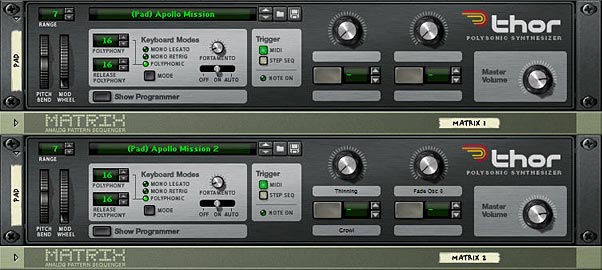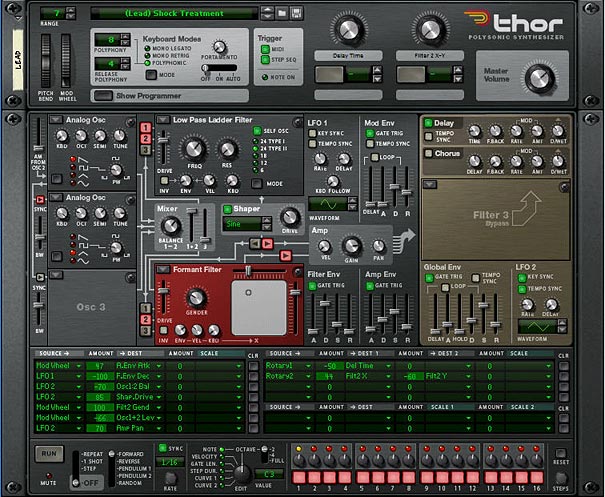Download the Refill: DopeTank-Free-2010
A collection of 106 Thors and 15 Combinators made by Heikki Roots (aka Pirnikas or Deep’n’Dark). He was gracious enough to offer this out to the Reason community for free. Here’s what he has to say about his refill:
When making this refill I wanted to keep the sound phat, clean and musical. Another thing I wanted was making every sound different so there’s something for everyone.Every sound-designer has their own methods and their own taste of how it should sound. I like when there’s lot of edge but not too much. When playing the sound, it should make you wanna play your midi keyboard. Most of the time the modwheel has been assigned to some parameter, sometimes the other buttons & rotaries as well. When playing pads or other patches that you may play as chords, I’ve tried to keep the sound clean.
The Combinator patches:
There’s 15 combinators inside this refill. When layering sounds, you can make extremely rich and big sounds as you can add just as many layers as you want. Another thing are the effects which bring in lot of possibilities to shape the sounds.Sometimes you have an instrument that doesn’t sound that special, but when layering some sounds together, you can make some “killer” sounds. Some of these patches have tweaking possibilities, most don’t. These patches can be used for many genres, like hiphop, electronic but also for pop or film music etc. So get the refill and expand your rack as this refill is free.
The Thor patches:
The Thor patches have been categorized into different folders so it’s easy to find right sound every time. The categories are:
- Bass
- Fx
- Keys
- Leads
- Mono synth
- Modulated
- Other
- Pads
- Poly synth
- Sequenced
- Voices
What I found great about these patches is the fact that the sound is indeed very clean and crisp. For the combinator patches, there’s a lot of interesting reverb going on in most cases, and the sound is very spacious. Also, what’s nice is that every mod wheel does affect a parameter, so you can vary the sound as you play. The only thing I would criticize is the fact that most of the other combinator parameters or Thor parameters don’t have any modulations assigned to them. I think this misses out on a great opportunity to enhance the patches even further. But putting that aside, the sounds in here are top notch!
Highlights for me were the Combinator and Thor Pads. I think this refill shows off a lot of reverb talent and that comes across best in those patches. I also thought the sequenced and voice Thor patches were really nice, and it’s too bad there weren’t more of these. Perhaps in some future patches or refills, since Heikki has promised more free patches to come in the Propellerhead User Forum.
Thanks for sharing Heikki!


